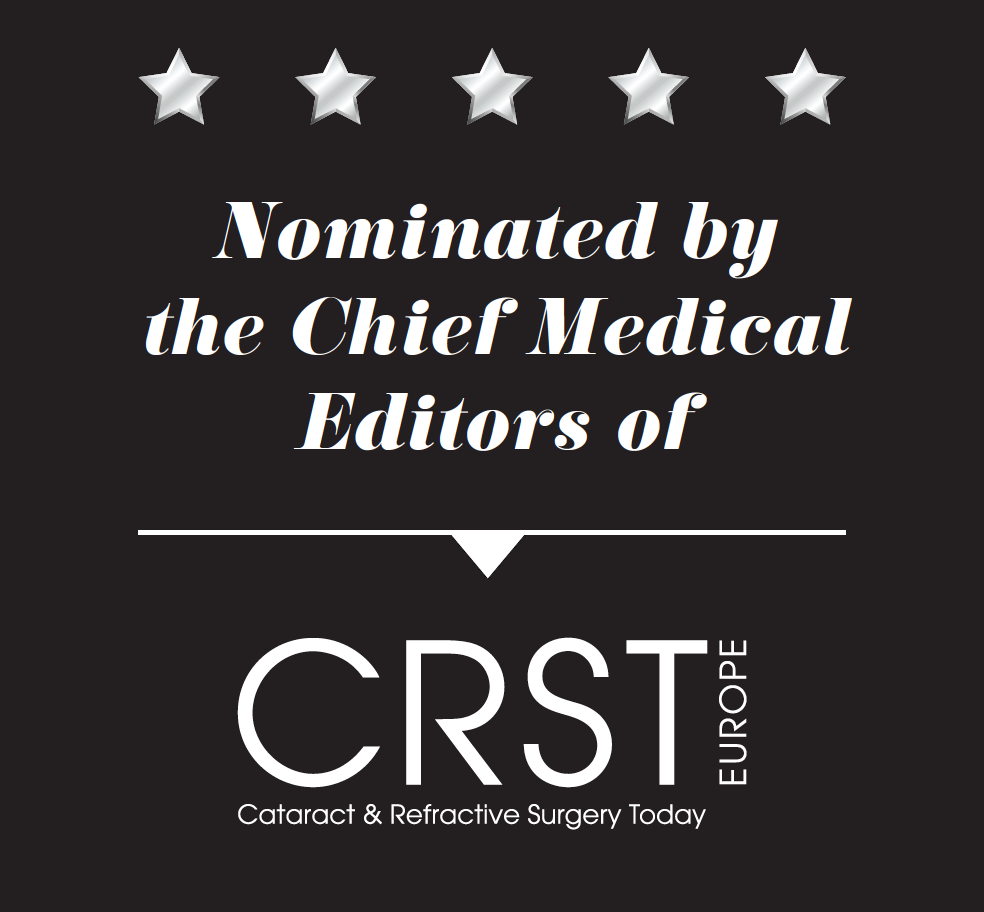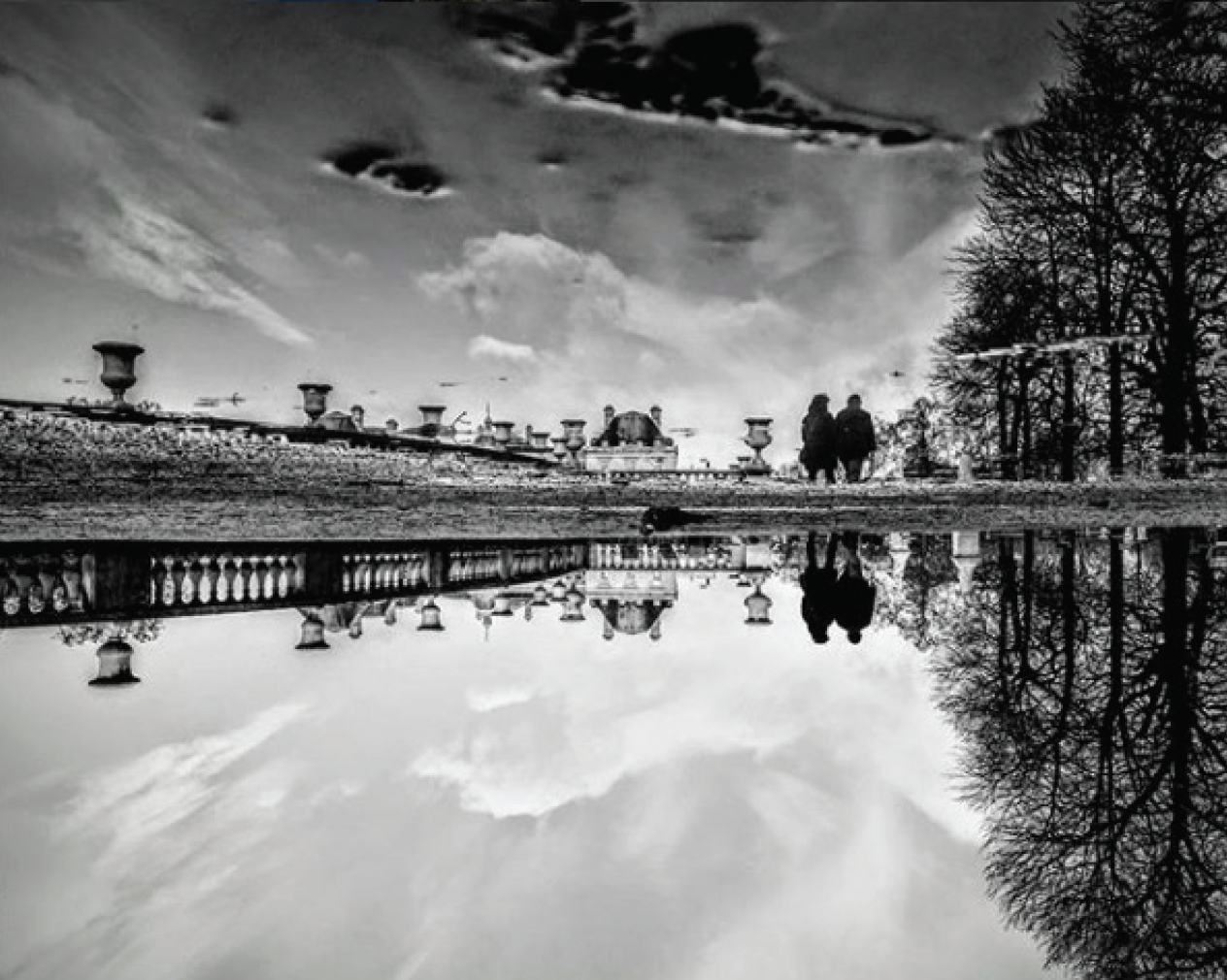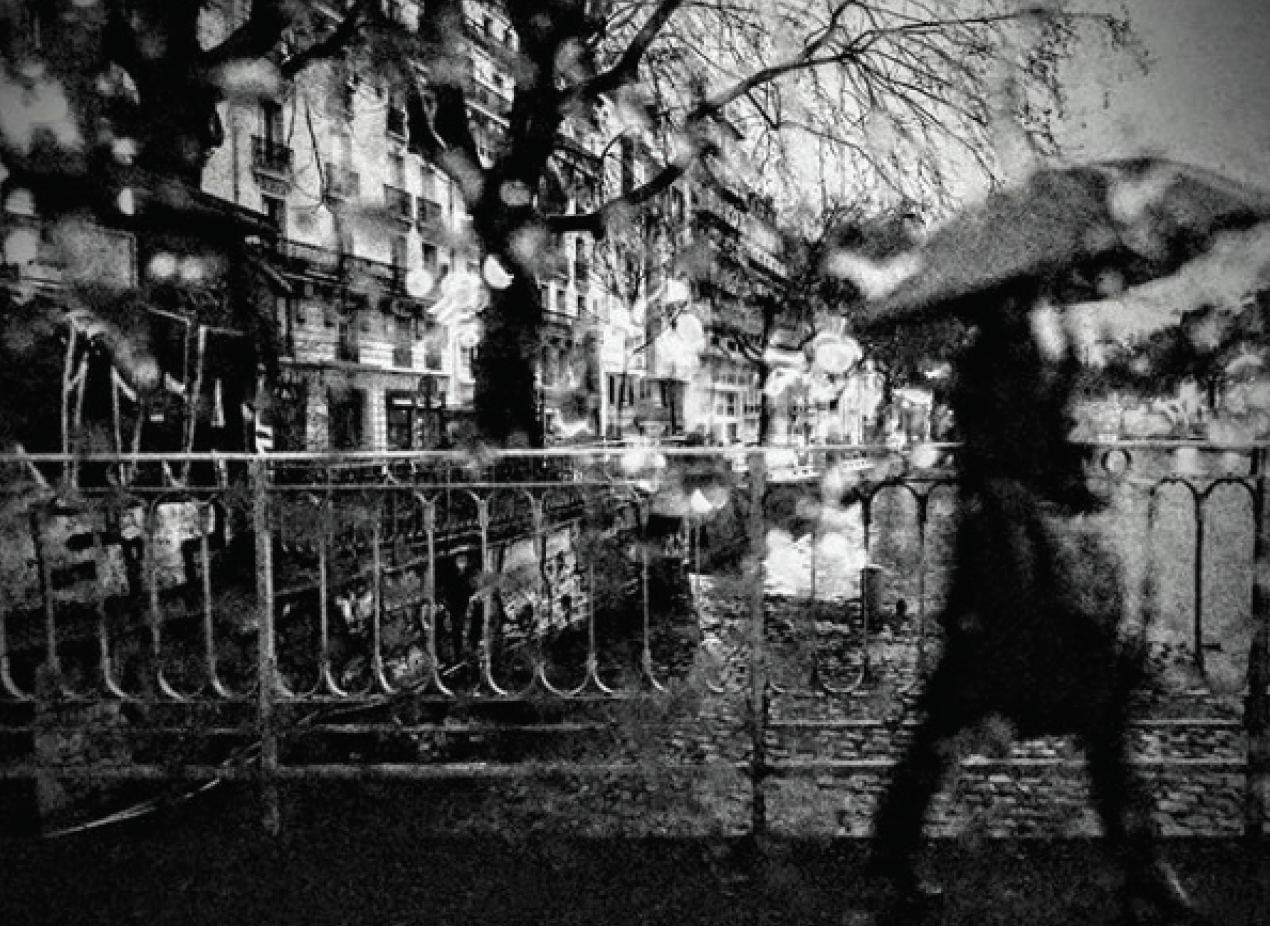Dr. Gatinel, the head of anterior segment and refractive surgery at the Rothschild Foundation in Paris, is a researcher and innovator with an interest in ophthalmic optics. His most recent investigative forays include taking another look at Zernike analysis to try to make it more clinically useful. In this interview, Dr. Gatinel talks about his worldly travel schedule, why he is so curious, and his love for photography.
Interviewed by Laura Straub, CRST/CRST Europe Editor-in-Chief

BMC: Who or what drew you to ophthalmology?
Damien Gatinel, MD, PhD: I always wanted to be a doctor, but my heart was also drawn to the basic sciences, especially the hard sciences like math, physics, optics, and astronomy. It seemed logical to me that the perfect combination of these interests would be ophthalmology. When I was really young, however, I honestly thought that ophthalmology mainly dealt with optics and refractive surgery, and I had no idea that you could also do vitreoretinal procedures, for instance. Part of this perception, in France at least, is because we don’t have independent optometrists per se; instead, patients go to their ophthalmologist for refractions. There are many medical ophthalmologists who do mostly refractions and routine checks, in comparison to a few ophthalmic surgeons. Naturally, I thought ophthalmology would mainly be a specialty dealing with refractive issues—that’s essentially why I chose ophthalmology.
BMC: Once you realized a little more about ophthalmology, did it influence how you found your niche?
Gatinel: Long before I was a medical student, I was devouring magazines about lasers and technological inventions like that. I really believed that ophthalmology was going to be cool because I could do research in an engineering environment, work with lasers and other fancy technology, and also be a doctor. So even before I had to formally choose a medical specialty, I knew I wanted to be an ophthalmologist and I knew I wanted to do what I’m doing today in terms of refractive surgery and optics research.
In some ways, it was fortuitous that I had little appreciation of the breadth of subspecialties one can undertake as an ophthalmologist. As a result, I had a precise idea of what I wanted to do, and even when I was exposed to other specialties during my medical studies, I never deviated from this goal. I stuck with refractive surgery and issues related to ocular optics because it’s what most fascinates me.
BMC: In your research, what are you currently working on, and how is it affecting your practice and patient care?
Gatinel: Currently I’m working on a new model for more accurately describing the optical aberrations of the human eye using an approach combining mathematics and physiological optics. Second, I am also working on keratoconus detection and characterization. Third, I am working on the optical designs for the next generation of trifocal diffractive optics. Additionally, we recently published a paper on an objective cataract grading method, based on lens densitometry measurements on swept-source OCT scans with the IOLMaster 700 (Carl Zeiss Meditec).1 This method utilizes the cross-sectional image from the swept-source OCT, from which we can calculate an index of cataract opacity. This is a research project we’ve been working on for a long time—and I think it will be a very important milestone, both clinically and from a research standpoint. We’ve also undertaken some research with the HD Analyzer (Visiometrics) in the past. The idea is to define new objective measures for distinguishing between surgery for dysfunctional lens syndrome and true cataract surgery. We have experimented with other metrics in the past and now we are investigating swept-source OCT.
Last but not least, we are working on using deep learning processes and big data to improve IOL power calculations. We are just getting started with this, but we’re excited because I think we can do something great with it.
If anything, my main problem is that I have a hand in many different things all at once. It’s time consuming to be involved in so many different projects, but I don’t find myself fulfilled by just one field of study. I don’t like to stay in the same track; I like to be doing different things at the same time.
BMC: You have your hand in a little bit of everything. How do you feel that affects the care you can provide to your patients, being on the cutting edge of many different areas of ophthalmology?
Gatinel: In terms of the care I provide, I feel it is incredibly beneficial because I can give patients what I think is the most advanced technology, resource, or expertise. There is a potential downside, however, in that if I am heavily invested in research, I have less time for clinics.
On the other hand, I often work with research teams away from the hospital. I do the mathematics in my spare time on weekends or at night. And most of the data collection in my field can now be automated and computerized, for example if you need to extract a great deal of data from electronic health record systems. That saves time so you have more time for thinking.
Ultimately, my patients do not suffer too much from my time investment in research, and I still dedicate most of my days to clinical work. In fact, I don’t even have a dedicated day for research in my schedule. It’s more like after hours, evenings, and sometimes vacation. But that’s not a problem for me; the work itself is so enjoyable that it is a kind of vacation or recreation in itself.
BMC: In February, you won Best Paper at the Wavefront & Presbyopic Refractive Corrections Congress in Denver for your new Zernike formula.2 Can you talk about your research and the paper that you presented?
Gatinel: This research was the core of my PhD work, which I did somewhat late in my career for various reasons. But this project was a long one. It’s aimed at providing clinicians with numbers that make more sense when they analyze ocular wavefronts. The Zernike system was designed by Frits Zernike to describe instrumental wavefront errors, such as what occurs in the optics of microscopes or telescopes, but for many reasons it’s not really suited for human eye analysis. For example, if you try to predict an eye’s refraction from the wavefront Zernike analysis, you will encounter some systematic errors. Similarly, the titration and prediction of the impact of higher-order aberrations may not be clinically as accurate.
I tried to provide a basis of functions that are more directly related to the clinical aberrations that we see in our patients. Now I’m at the stage where I’m comparing the Zernike measurements to this new class of operation—trying, for example, to see if we can predict refractions with greater accuracy. The numbers we are generating match the clinical situation more closely than the Zernike. So far, it’s been encouraging.
Of course, I was only able to undertake this work in close collaboration with mathematicians using a multidisciplinary approach. You definitely cannot work in this field alone; you need mathematicians, statisticians, and computer scientists if you really want to push things forward with any sort of momentum. I encourage my fellows to develop related skills like learning computer programming languages, which were not really required in the past in the field of medicine and ophthalmology.
BMC: I’ve heard from someone who attended the meeting that your research in this space is “mindblowing,” so we are all anxious to hear more as your research continues. It’s fantastic that you can attend as many meetings as you do to present your research. What is the draw for you to attend and present at so many meetings, and how do you prioritize which meetings to attend?
Gatinel: I like to participate in meetings where I’m invited to speak, of course. [Laughs.] Some of them I attend so that I can learn from others, and some I attend for academic reasons. But many I go to for both reasons. I like to present on what I’m doing because I think you really need to interact with your colleagues to receive an objective external critique on what you’re doing. I also like to teach about things I believe are important. So I very much value this aspect of interaction with an audience and receiving feedback, whether positive or negative—it fuels my work and drives me with more energy and stimulus to do better. Mainly I learn from books and papers. But I do believe you need to go to meetings sometimes to be exposed to things you would never imagine or envision. When you go and listen to someone speaking about something you didn’t know about, you glean a little from what he or she says on the podium, but you also learn about what you need to develop the knowledge further—later on, on your own, to become more knowledgeable about that one thing. I would summarize this by saying that I simultaneously learn and realize what I don’t know during meetings, and later I try to fill the gaps by reading books and papers.
When I was younger, I went to many meetings like ARVO and AAO, and then I would sit and learn about what I would like to research further in greater depth. Today, I’m more often in the position of speaker, but I still like to keep my ear to the ground on what others are saying. It often gives me ideas to expand upon what they’ve done or to develop my own research based on something I find interesting.
The other aspect of these meetings is that I like to travel to countries I’m not familiar with. I love to make friends and meet colleagues in different countries. All of these things factor into my decision of whether to go to a given meeting.
BMC: What are some of your favorite places you’ve visited? And when you go somewhere new, what are the things you gravitate toward seeing and doing?
Gatinel: Definitely taking pictures and going to local museums. Museums are exciting to me for what they display, but also for the effect they provide my mindset. Being surrounded by art pieces seems to stimulate my creativity, and I always feel mentally energized after visiting an art gallery. If possible, I also attend a show, but that’s often difficult because my evenings are usually booked on business trips. But yes, when I’m not in the conference hall, if I am in a new city, I try to immerse myself in it.
In terms of landscapes, New Zealand and South Africa have left a great impression on me. I wish to explore more of the South American continent—I have been to Peru and more recently to Chile, and I was blown away by the wild beauty and variety of the Atacama desert landscapes.
I particularly like going to the United States and to Asia, my two favorite destinations. I really enjoy the US West Coast, San Francisco, for example, but I am also a big fan of New York. (There are not many meetings there, unfortunately.) With respect to Asia, I particularly adore Japan and Thailand. I appreciate the Asian hospitality and the respect they show to their visitors. Within Japan, Kyoto is a city where I could spend many weeks. Although it’s far from France and so different culturally, it sometimes feels a bit like home there, even when I’m alone. It’s hard to explain why, but I always get the same feeling when I’m there as when I’m home. I also enjoy traveling to India. It’s a fascinating country in many respects and it’s always an exciting destination for me, not to mention the fantastic photography opportunities that it offers.
I’d rather travel long distances if I can because it allows me to appreciate cultures vastly different from my own. Short trips are usually not as enticing—for a European like me, although there are many occasions to visit countries like Germany, England, Spain, and Italy, with a short professional trip, I find you have all of the stress of travel without the excitement of going somewhere new.
BMC: I’ve gotten to know you over the years through the time we’ve spent together at meetings and via collaborating on articles for BMC’s publications, but I’ve also gotten to know you through the photographs you post on Instagram under the handle @madeingelatin and Facebook. It’s obvious that you like to take photographs in new places as well as in your everyday life. What draws you to photography, and how does your love of photography fit together with your love of ophthalmology?
Gatinel: Ophthalmology is an exciting profession. It combines many aspects from science to medicine, discipline, and being proficient with microsurgery. But one aspect that might not come to mind at first is the artistic dimension. Photography, because it’s a visual art like painting, is something that I feel complements ophthalmology well.
If you are fascinated by optics and vision, you’re quite likely to be interested in the visual arts, and photography is made very easily accessible today with digital cameras and smartphones. I adore painting, but I must admit that I’m a self-confessed poor painter! So with photography, I try to take a picture of something I would like to paint if I could, as some sort of compensation for my lack of painting finesse. I also like playing with light. I try to take a subject that may be somewhat mundane to start with, but pay attention to the lighting and framing in particular to create something artistic with it.
I like to take pictures of luminous reflections, which form inverted images on reflective surfaces, and play with the orientation of the photo, to present it upside down. This refers to the laws of the propagation of light, which are intangible and obey universal laws, whereas our perception of the surrounding world is eminently subjective. What makes me happiest is when I take a picture of something that should be unremarkable but I am able to turn it into something interesting. It doesn’t have to be sophisticated.
I take pictures every day, so what you see on Instagram is only the tip of the iceberg. (Editor’s note: Displayed below are some of Dr. Gatinel’s recent Instagram posts of his photography.)



BMC: What are some of your favorite things that you like to photograph?
Gatinel: I like to combine complex and simple motifs mainly through the genre of street photography. I am drawn to geometry, and people often tell me there is a strong geometric sense in the composition of the lines and the structure of the pictures I take. I’m glad they feel this because it’s what I feel when I’m framing that particular shot. I think it’s all the combination of a particular light, the geometry, and something that perhaps reminds me of a previous painting or a painter’s style. It could be a Renaissance picture or something I remember from a movie scene, a special atmosphere for example. Then I try to take the picture and see if it matches what I’m envisioning.
When you take pictures, you always make the photograph with your eyes before you actually have the picture. First, you take it with your mind. And what makes a photographer happiest is when the snapshot he or she takes is exactly what he or she had in mind beforehand. Of course you’re disappointed when you had an idea for a great picture but don’t quite hit the mark. But sometimes, the picture you take even exceeds what you were trying to capture. That’s something I really find exciting about photography.
I’m just an amateur, and there’s no requirement other than having fun with it. And if people like it, then that is good. Sometimes people tell me about a particular emotional feeling that is evoked when they look at one of my pictures. That is an interesting experience because the picture can convey something that seems to conjure in another person’s mind the same thing I had in my own. It’s probably more that it captured something universal, and I like that idea as well because it means I have managed to harness the essence of that moment, a kind of achievement in visual poetry.
BMC: Besides photography, what other passions do you have outside the office?
Gatinel: I really love music, and I played piano when I was younger. I usually immerse myself in music as I work on a project. I especially enjoy classical music, from the 20th century or late 19th century, and I have a weakness for works by Ravel, Gershwin, Chopin, and Satie.
Reading is also a favorite pastime, and I prefer technical books rather than novels to keep my mind stimulated. As often as I can, I enjoy museums and art galleries as I mentioned, and I really, really, really adore old classic cars. The construction, the lines, and the aesthetics just call out to me every time.
BMC: When you retire from ophthalmology, where do you see yourself, and what do you see yourself doing?
Gatinel: I don’t think I will ever retire completely. I think I’d still read up on what people are doing and where refractive surgery is advancing. I might remain as a consultant to share my ideas with others—if I still have new ideas at that time. I have so many friends now in this field that I would relish the opportunity to travel to see them, and this would of course be related at least partially to work.
But when I’m really finished with clinics, I think I’ll travel and maybe write a book or two on things that I have to postpone for now. These would likely be technical books or something I would like to condense into a book to share with students, for example on optics made easy for clinicians. I could write, travel, see friends, and yes, probably go to more movies and shows than I can now. In terms of where I will be, I like France, but I would be interested in experiencing life for an extended period of time somewhere else, maybe in the United States or in Japan. That would be lovely.
BMC: If you had to characterize yourself in one word or phrase, what would it be, and why?
Gatinel: I would say curious. But also I love challenges. And I don’t like dogmas in my field. I hate preconceived ideas—especially things that are accepted but not really proven. I have this strong need to make my own understanding, evaluation, and objective judgment before accepting new ideas or concepts. I believe that curiosity fuels creativity.
Ultimately I think what characterizes me is my curiosity, my desire to see a little bit more or outside of what you are supposed to see, the tendency to approach things with what I call an orthogonal view. That is incorporated in my research and practice, to develop new ideas and discover new things.
BMC: If you had to nominate one creative mind in ophthalmology, whom would it be and why?
Gatinel: Gerrit Melles, MD, PhD, because of his inventiveness and creativity—he has developed many new techniques for corneal surgery. I have had the honor of meeting him on many occasions, and he has a fascinating personality. Of all the ideas he has contributed, for instance with Descemet membrane endothelial keratoplasty, he is really an innovative creator in the realm of corneal surgery.
1. Panthier C, Burgos J, Rouger H, Saad A, Gatinel D. New objective lens density quantification method using swept-source optical coherence tomography technology: Comparison with existing methods. J Cataract Refract Surg. 2017;43(12):1575-1581.
2. Gatinel D. A new aberration basis for better ocular wavefront analysis. Paper presented at: Wavefront & Presbyopic Refractive Corrections Congress; February 23-24, 2018; Denver.



